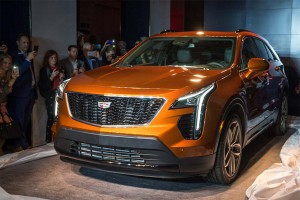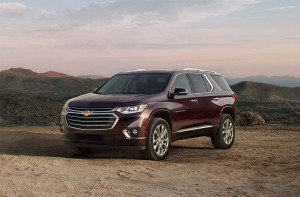General Motors net earnings dipped 60% to $1.05 billion during the first quarter but still managed to beat Wall Street expectations thanks to strong demand for its North American light truck line-up.
The announcement by the nation’s largest automaker came less than a day after Ford Motor Co. also topped earnings forecasts by riding a wave of demand for pickups, SUVs and CUVs. Ford yesterday said it was going to all but abandon traditional passenger cars in North America and GM is also expected to trim its sedan line-up, though not nearly as drastically as its cross-town rival.
“Results this quarter were in line with our expectations with planned, lower production in North America related to the transition to our all-new Chevrolet Silverado and GMC Sierra,” General Motors CEO Mary Barra said in a statement accompanying the earnings report. “We are on plan to deliver another strong year in 2018.”
GM earned $1.05 billion for the latest quarter, down from $2.61 billion a year ago. On an adjusted per share basis, however, the slide was far less severe at $1.43, compared to $1.75 during the January-to-March 2017 period. Wall Street’s consensus forecast was just $1.24, according to Thompson Reuters. Revenues of $36.1 billion were down 3.1% but also beat the Street’s estimate of $34.66 billion.
Unadjusted, per-share earnings came in at 77 cents, GM’s first-quarter numbers hit by a $900 million charge for restructuring the company’s South Korean operations. Earlier this week, GM reached a settlement with its workers calling for major concessions and agreed to abandon plans to push the troubled unit into bankruptcy. The Korean government plans to offer $750 million in aid, according to a local news service while GM also plans to inject an additional $3.6 billion in funding for its operations. But it still plans to close one of four plants and slash its Korean workforce.
GM has been cutting production in the U.S., meanwhile, albeit with no plans to close plants or order long-term layoffs. The trimback reflects several factors, including a softening of the U.S. new vehicle market, but primarily the rapid shift from sedans and other passenger car models to SUVs, crossovers and pickups – light trucks collectively accounting for about two-thirds of the overall American market right now.
(GM adds shift at busy CUV plant in TN. Click Here for more.)
That shift is leading rival Ford to kill off its Fusion, Taurus and Fiesta models. GM still plans to keep most of its sedans – at least for now – but is dropping the Sonic nameplate and trimming production of others, including the Chevrolet Cruze sedan, produced at a plant in Lordstown, Ohio. The fate of other passenger car models, such as the big Chevy Impala, is reportedly under close scrutiny.
On Thursday morning, GM Chief Financial Officer Chuck Stevens told reporters that the company will “make significantly lower investments on a go-forward basis” in its passenger car line-up.
At the same time, GM is ramping up production of its light truck line-up. It is adding a shift at the Spring Hill, Tennessee plant originally opened to produce Saturn sedan models. That factory has been struggling to keep up with demand for highly profitable crossover-utility vehicles like the GMC Acadia and the Cadillac XT5.
The Caddy brand is notably shifting its focus from cars to light trucks, the maker unveiling a new XT4 compact CUV model at the New York International Auto Show earlier this month. It is planning to add at least two more models over the next few years. Other GM brands have also been adding all-new models, as well as more lavish versions of existing truck nameplates. The typical 2017 Chevy Traverse carried an MSRP of just under $39,000 compared the midsize segment average of $41,285. For 2018, a new Traverse High Country edition has a base MSRP of $53,800.
(For more on GM Korea, Click Here.)
For the latest quarter, GM saw its profit margins dip to 7.2% compared to 9.5% a year earlier, but CFO Stevens told reporters that he expected to see that reach or exceed 10% for the full year.
The company’s bullishness comes despite headwinds including a weakening U.S. market, the threat of new Trump Administration tariffs on imported steel and aluminum and already rising commodity prices on those and other materials.
“It is a more difficult environment than it was three or four months ago,” Stevens said, but when asked about the threat of tariffs, he added that “We are confident we can continue to offset that.”
(Cadillac to slash sedan line-up, shift focus to SUVs. For the story, Click Here.)





um, ok.
I typed “uh, ok” at the Ford article’s comment section so figured I’d change it up a tad.